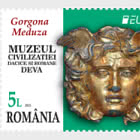Sighisoara Historical Centre - UNESCO World Heritage
The citadel of Sighisoara, museum city, part of the dowry of our history, preserves in lines, forms, volumes, colors, environment and typologies the memory of a time, which, by specific means of architecture, town planning and the objects of old craftsmen, speaks about the continuity and permanence of the Romanian people in Transylvania.
Many visitors from other countries and from all times have observed the quaintness of the city which they have praised as the "Pearl of Tarnava". Attested by documents, the name of the city appears in the year of 1280 under the name of "Castrum Sex", and by the name of "Sighisoara" in the year of 1435. In order to face the danger, the inhabitants of the citadel have built strong walls and a fortified church. To these, the 14 towers of the guilds and four bastions have been added which have increased the defending capacity.
At the beginning of the 15th century, Sighisoara has supported the Muntenian Prince Vlad Dracul, established here between the years 1431-1435, in order to prepare for the occupation of the throne of Tara Romaneasca. The stay of the prince within the citadel is attested by the fabrication of a personal coin, with intense circulation in the Transylvanian lands. It is adequate to mention another important event as well: in 1431 Vlad the Impaler was born in Sighisoara.
After losing the battle at Mohacs (1526), the Hungarian Kingdom became part of a Turkish region, and Transylvania transformed for more than a century in a theatre of fights between the Hapsburgs, Turks and the Princes of Transylvania. Sighisoara returns in the history pages, in the year of 1600, when Mihai Viteazul has travelled through the citadel, in his march of victory towards Alba Iulia, where he proclaimed the first union of the three Romanian Principalities: Tara Romaneasca, Transylvania and Moldavia. The 17th century brings numerous afflictions to Sighisoara. The sieges, the famine, the robberies and the outbreaks of plague, the floods, the earthquakes and the devastating fires have made thousands of victims and have caused great destructions.
Another important moment of the Revolution in 1848 is related to Sighisoara. In the locality of Albesti, not far from the citadel, in a bloody battle with the troops of the tsar, fell one of the greatest Hungarian revolutionaries, the poet Petofi Sandor.
For a short period host to the great composer Johannes Brahms, the museum city still conserves many interesting places and buildings for any visitor interested in or enamoured of medieval architecture.
Out of the 9 towers that still exist today, The Clock Tower (Turnul cu Ceas) which guards the "Square of the Citadel" raises as a first and imposing building. The turret clock, the same as the model in Prague, was built in Switzerland. The strongest tower of the citadel, The Goldsmith’s Tower (Turnul Aurarilor) (non existent today) has created a legend: a good marksman was supposed to have hit with a bullet a Turkish leader who had arrived on the back of an elephant, in front of an army which was preparing to siege the citadel. In the remembrance of the happening, a wooden tower called "With a Human Face" (La chip) can be seen in the Western part of the city. One of the most representative monuments of Transylvania can be also found in Sighisoara. It is the Church on the Hill, built out of stone (the 14th-15th century), solidly raised in the middle of a place with rich vegetation. The entire ensemble breathes durability in a mixture of architectural styles, out of which the Gothic style, nonetheless, visibly breaks thrrough.
The postage stamp issue dedicated to Sighisoara reproduces on the images of the three values: The Church on the Hill (Biserica din Deal) (the face value of Lei 1.00), the Historical Centre of the city (the face value of RLei 1.60), and The Clock Tower (the face value of Lei 6.00). The perforated souvenir sheet of the issue presents entirely, the wall of the citadel with the towers and the existing bastions within the inner constructions. The postage stamp of the souvenir sheet has the face value of Lei 7.60.
The issue is completed by a set of 3 maxicards.
Romania - Recommended stamp issues
WOPA+ recommended stamp issues
| Avatar - Fire and Ash |
| Issued: 03.12.2025 |
| ›New Zealand |
| 50th Anniversary of the Founding of the 24th November Bar Scout |
| Issued: 24.11.2025 |
| ›Montenegro |
| Krisjanis Valdemars |
| Issued: 02.12.2025 |
| ›Latvia |
| Sign Language - Good |
| Issued: 02.12.2025 |
| ›Bosnia and Herzegovina - Republic of Srpska |
| In Memory of the Fallen and Murdered on October 7, 2023 |
| Issued: 08.10.2025 |
| ›Israel |
| Annual Collection Folder (New York) |
| Issued: 05.12.2025 |
| ›United Nations |
| Year Set |
| Issued: 24.11.2025 |
| ›Isle of Man |
| Shipping in the 17th and 18th Centuries - Peat Shipping |
| Issued: 05.12.2025 |
| ›Netherlands |











































